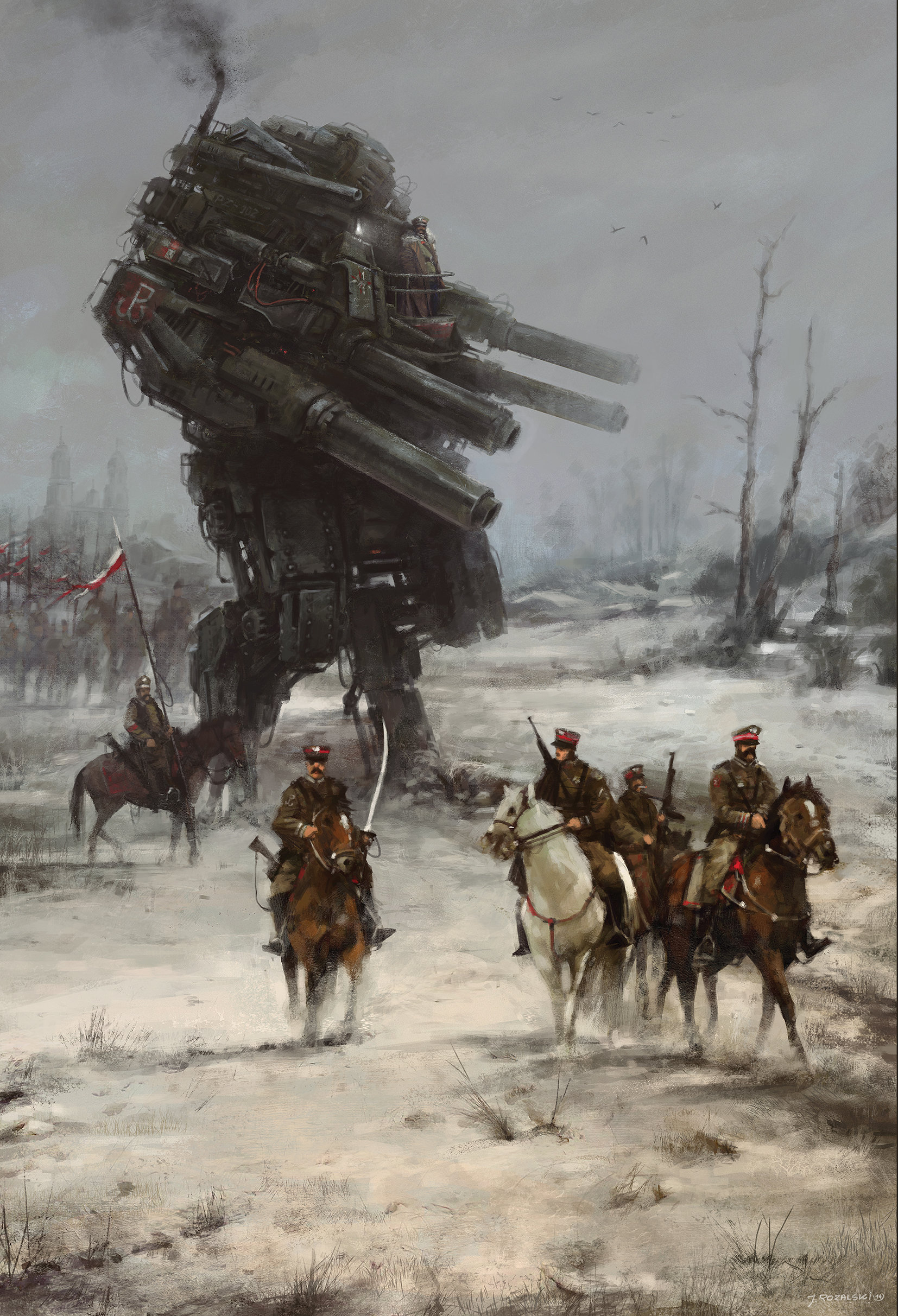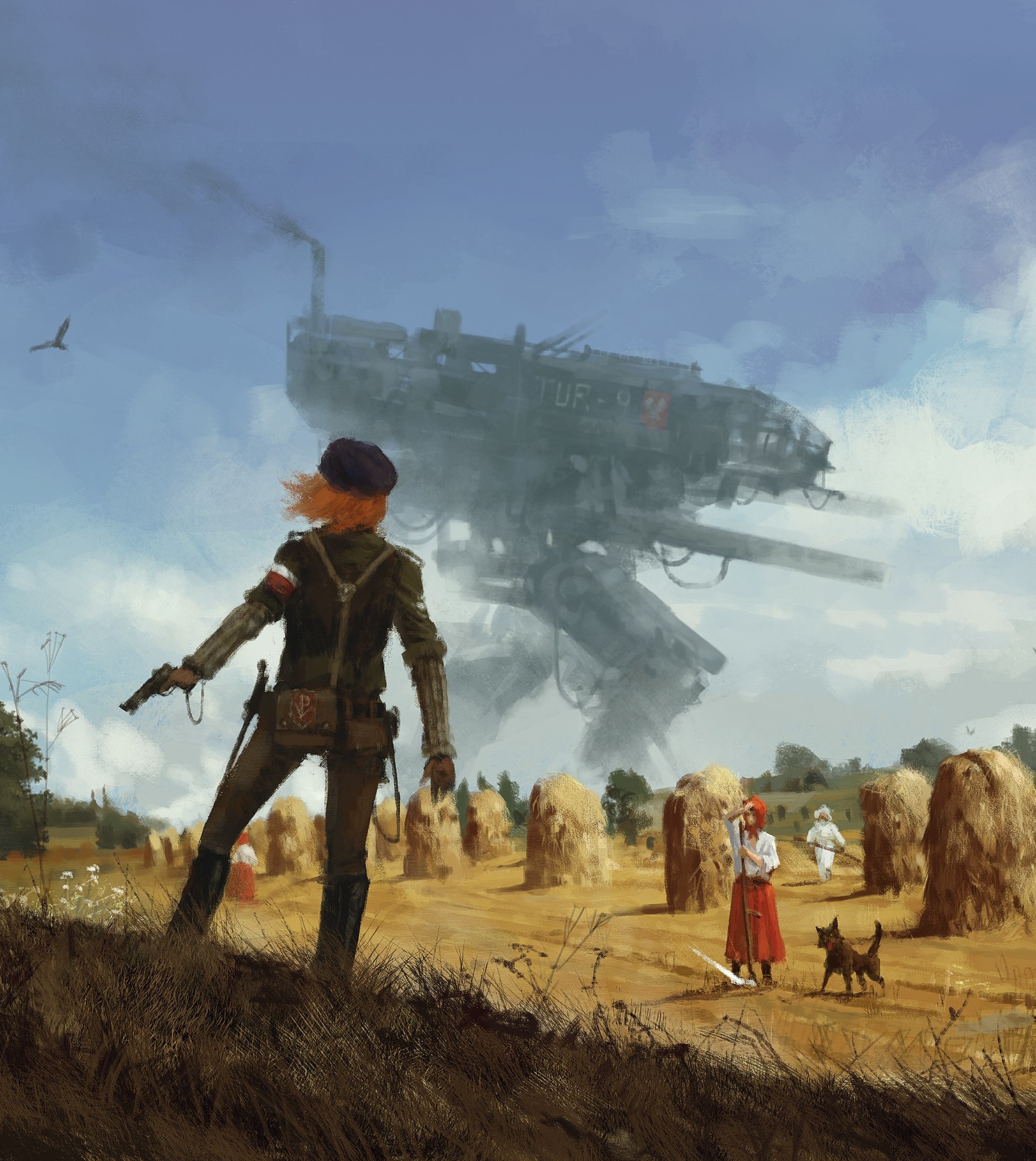
Foreword
Guns, Magic and Gears
Iadrune is a very different world than others you might have adventured in previously. While it shares similarities with other fantasy and science fiction worlds (Eberron, Iron Harvest's 1920+, and many others) it was created with a specific limitation in mind: being viable for use with the Dungeons & Dragons 5th Edition system.
For this reason, I advise you not to begin this campaign with the idea that every action, mechanic, and law of nature will work perfectly with the setting. Spells reference deities and extraplanar beings that canonically don't exist in Iadrune. Using magic to see the future isn't really a thing for the people of this world, despite D&D 5e having an entire school of magic dedicated to the practice.
Things will be hand-waved. Mechanics and fluff will not always match, and will often have to be "explained away" within the world's rules. Certain spells may be imagined as gadgets, various abilities will have to be re-imagined, and several magic items famous in the 5e system simply will not exist.
With all that said, never fear - anything lost in the translation will surely be replaced tenfold with incredibly unbalanced, absurdly powerful homebrew I drunkenly write into the campaign after one of you gives me an incredibly stupid idea. Don't cry because you lost the Holy Avenger, smile because you gained a +4 Ethersteel Greatsword that transforms into a gatling gun when you press a button.
Table of Contents
-
3Travel, Camping and Resting
- 3Overview
- 3Travel
- 3Setting Out for a Journey
- 3Travel Speed
- 3Travel Paces
-
4Travel Encounters
- 4Encounter Timing
- 4Living to Fight Another Day
-
5Food, Camping and Rests
- 5Resting While Traveling
- 5Campsites
- 5Natural Shelter
- 5Roadside Inns & Outposts
-
6Rations on the Road
- 6Rations
- 6Machines & Fuel
- 6Lost or Abandoned Machines
-
7Equipment and Armor
-
8Rules for Firearms
-
9Acknowledgements
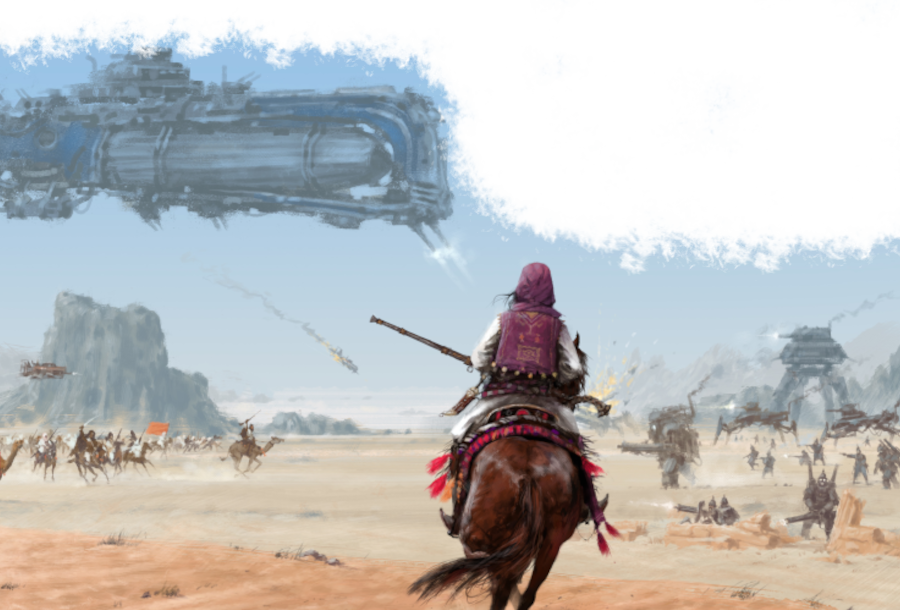
Rules for Travel, Camping, and Resting
Overview
Iadrune is not Faerun. The average person can walk from Seawatch to Chancery and back without encountering anything you might consider a "monster" (insert man was the real monster joke here). The dangers of the road in this more civilized world have less to do with knashing teeth and claws, and much more to do with rumbling stomaches and engine malfunctions.
That being said, monsters do exist - see the "Nightmares" section of the world primer. Banditry, while not as common as it seems to be in Faerun, is known to happen, especially in the less settled parts of the continent.
The elements must also be overcome. There is a reason why the land north of Ironhold and south of Katash are populated only by nomadic tribes. Intense heat and cold can kill an Iadrunian just as surely as a sword or spell. However, you are playing as supposedly capable adventurers.
Make good use of the following rules, and the odds of your headstone reading "Ran out of water like an idiot." will be overtaken by the slightly more heroic epitaph: "Straight up took a bullet to the dome, nothing we could do."
Travel
Iadrune is a large place. The road from Chancery to Katash is almost 1500 miles, a journey of months by foot. These rules describe how long such a journey might take.
Setting out for a Journey
The world map of Iadrune functions similar to older RPG's such as Fallout 1&2, Dragon Age, etc. in that the world is filled with Points of Interest (hereafter referred to as PoI's). These include anything that differs from the "standard" terrain of the area, from cities and towns to dungeons or landmarks.
When the party departs from a PoI, they will declare a destination. This can be a specific location that they know of, a general area of the world, or most commonly another PoI. If relevant, the time of day they began traveling is determined. At this point, each member of the traveling party declares what method of transport they are using for the journey, whether that be on foot, horseback, or by machine.
Travel Speed
Though somewhat industrialized, Iadrune has not developed any sort of inter-city transit system for the masses. As such, the fastest method of travel over land is still generally a single individual on horseback or machine equivalent. However, various methods offer various advantages.
The primary difference between methods of transport is their movement speed, which is based on the creature or vehicles Speed value on their stat sheet. This value is simply converted from Feet per Round to its Travel Speed in miles per day.
This speed value can be divided by 10 and rounded down to find its Travel Speed in miles per hour.
Forced Marches and Traveling Unseen
At the beginning of each day of travel, the party may choose to engage in a Fast, Normal, or Slow Pace. These each have advantages and disadvantages.
A Fast Pace increases the party's Travel Speed by 50% for that day of the journey. However, every member of the party must consume twice the normal rations for the day or suffer a level of exhaustion. Additionally, the party's Passive Perception suffers a -5 penalty, and any skill checks made during the day's travel have disadvantage. Note that this does not apply to skill checks made during encounters, only those made while moving. A Fast Pace may not be chosen if any member of the group is over encumbered.
A Normal Pace has no particular advantage or disadvantage. This is the default method of travel if nothing else is declared, or if the party cannot agree.
A Slow Pace is useful for moving stealthily in hostile territory, or when undue attention is undesirable. A party moving at this pace moves at only half speed, but is able to make a group Stealth Check for the day's journey, potentially passing by dangers or taking would-be ambushers by surprise. When making this check, penalties to stealth checks from armor are not applied, though any members of the group using a machine or war engine for transport make the check at disadvantage. A Slow Pace cannot be chosen if traveling by aircraft.
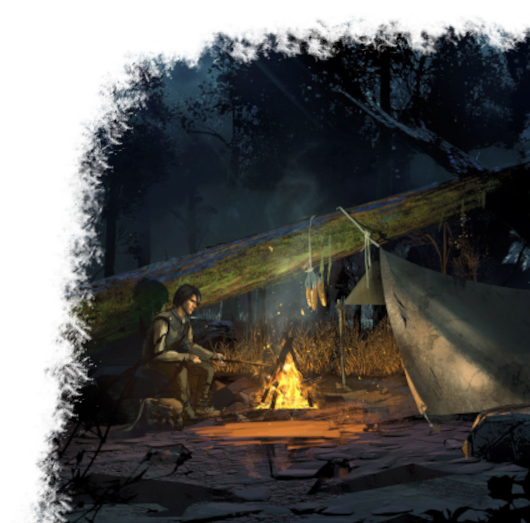
Travel Encounter Chance Table
| Territory Type | No Encounter | Peaceful Encounter | Neutral Encounter | Hostile Encounter |
|---|---|---|---|---|
| Civilized and Friendly | 01 - 50 | 51 - 75 | 76 - 95 | 96 - 100 |
| Civilized and Neutral | 01 - 50 | 51 - 70 | 71 - 90 | 91 - 100 |
| Civilized and Hostile | 01 - 50 | 51 - 60 | 61 - 70 | 71 - 100 |
| Wilderness and Peaceful | 01 - 70 | 71 - 80 | 81 - 90 | 91 - 100 |
| Wilderness and Neutral | 01 - 70 | 71 - 75 | 76 - 90 | 91 - 100 |
| Wilderness and Hostile | 01 - 50 | 51 - 55 | 56 - 70 | 71 - 100 |
Travel Encounters
Your party will rarely be the only group to walk any road in Iadrune. Though it is assumed that mildly interesting events occur every day on the road (as befitting any good adventure), only those encounters that have meaningful impact will be represented in-game. These Travel Encounters come in a variety of forms, and can be friendly, hostile, or anywhere in between.
Each in-game day of travel has the potential to contain a Travel Encounter. To determine whether an encounter occurs, the Dungeon Master will privately roll a D100 at the start of the day and compare the result to the Encounter Chance table below, using the value appropriate for the territory the party is traveling through.
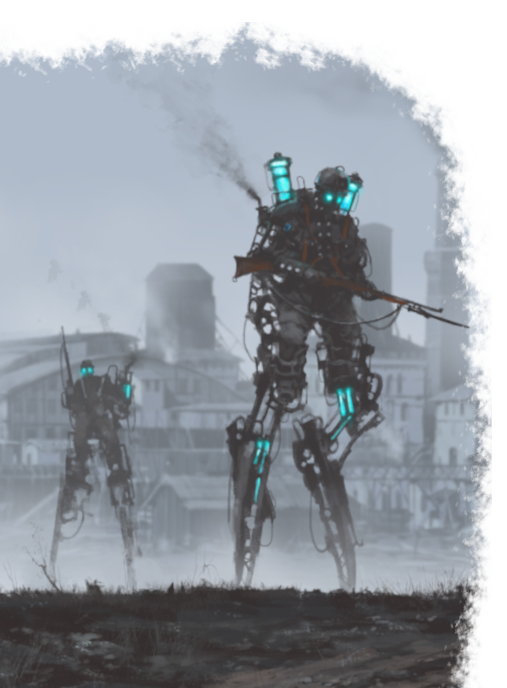
Encounter Timing
Assuming that a given encounter does not end in the entire party's untimely deaths or the end of a journey for some reason or another, travel for the day will continue.
When the result of the d100 roll causes a Travel Encounter to occur, roll 1d4 and consult the following table; the result is the time of day in which the encounter occurred (assuming standard traveling hours).
| D4 Result | Time of Day |
|---|---|
| 1 | Morning |
| 2 | Noon |
| 3 | Afternoon |
| 4 | Evening |
Living to Fight Another Day
Not every encounter will be a victory for the party. You might be confronted by bandits demanding a toll to cross a bridge, a passing mercenary company running a "road protection" racket, or even a variety of Nightmare seeking only to feed on your magical potential.
It is important to remember that "not a victory" does not have to mean death. Many vagabonds and cutthroats understand the logical result of simply murdering anyone that tells them "No" - after all, the punishment for a string of robberies is much less severe than for a bunch of roadside killings. Sometimes, it will be in your best interest to simply acquiesce to a particular group's demands. Remember, if they saw killing you as the preferred way to empty your pockets, they would've attacked when they had the element of surprise. They will often be willing to haggle down their price rather than risk open combat.
That being said, none of the major nations frown upon a few troublesome bandits meeting their end in "self defense," and they certainly won't be present for any potential trial. However, be wary about engaging with contracted members of the various mercenary companies. In addition to being fearsome fighters, defeating them might cause future reprisals.
Food, Camping, and Rests
It is vital to get adequate rest and nourishment when traveling long distances. Failure to do so will inevitably lead to your untimely demise, whether directly through exhaustion or indirectly by reducing your combat effectiveness.
Whenever the party is making a journey to a new location over several days or weeks, the standard Dungeons & Dragons 5th Edition rules for rests and recovery are replaced by the following rules.
Resting While Traveling
When traveling for an extended period, it will be necessary to find, create, or purchase shelter in order to avoid exhaustion. Without shelter of some kind, no rests of any kind will take effect. Shelter can take one of three forms: Campsites, Natural Shelter, Roadside Inns & Outposts.
Campsites
Campsites are basically what you'd imagine - a ring of tents, a campfire, sleeping on bedrolls and seeing the open sky. A campsite is the most basic form of travel shelter, and provides the fewest benefits. However, the ubiquity of the necessary supplies and the ability to set up just about anywhere more than make up for the discomfort.
In order to set up a campsite, the party must have enough camping supplies for each member. These supplies consist of tents, bedrolls, light sources and other miscellaneous outdoor tools, and can be acquired inexpensively from most settlements. In a pinch, extra camping supplies can even be crafted from materials gathered in the wild, perhaps using Leatherworking Tools or other artisan's tools.
Using a campsite to rest for the night during a journey provides the benefits of a short rest and prevents any buildup of exhaustion for that day, as though you had instead taken a long rest.
Setting up a campsite and remaining in place for 3 days while performing only simple activities (such as crafting, reading, or gathering nearby materials) grants the benefits of a long rest. When using this method to take a long rest, you do not recover any hit dice as you normally would.
Natural Shelter
Natural Shelters usually consist of caves, abandoned animal dens, rocky outcroppings that block the wind, or other such naturally occurring protection from the elements. They can be difficult to find (especially unoccupied), but provide ample security if you can locate one.
Finding a natural shelter requires a the party to be traveling at a normal or slow pace. At the end of each travel period, the Dungeon Master will roll a check against the group's Passive Wisdom (Survival). On a success, the party stumbles across an unoccupied natural shelter. Once a natural shelter has been discovered, it will become a Point of Interest on the world map for your party to revisit at another time without having to search for it.
Occupying a natural shelter to rest for the night provides the benefits of a short rest and prevents any buildup of exhaustion for that day, as though you had instead taken a long rest. Occupying a natural shelter and remaining in place for 3 days while performing only simple activities (such as crafting, reading, or gathering nearby materials) grants the benefits of a long rest.
Roadside Inns & Outposts
Roadside Inns & Outposts are small fragments of civilization where weary travelers can rest and recuperate, if they're willing to cough up the coin. Securing room and board at one of these establishments is enough to get any unfortunate adventurer back up to peak condition.
While Roadside Inns simply offer warm food and warm beds, Outposts are strategic spots in Iadrune where traders, mercenaries, farmers, and all other sorts have established a kind of "temporary but permanent" village out of circumstance. Whether situated at a vital crossroads or before a major river crossing, you can often find eccentric individuals and exotic goods up for barter.
There is only one rule universally recognized by all Outposts in Iadrune: no fighting in the camp. Doing so will see you removed immediately, likely absent a decent sum of money (or even a finger).
Paying for room & board at any roadside inn or outpost grants the party the benefits of a long rest so long as they meet the other requirements for resting.
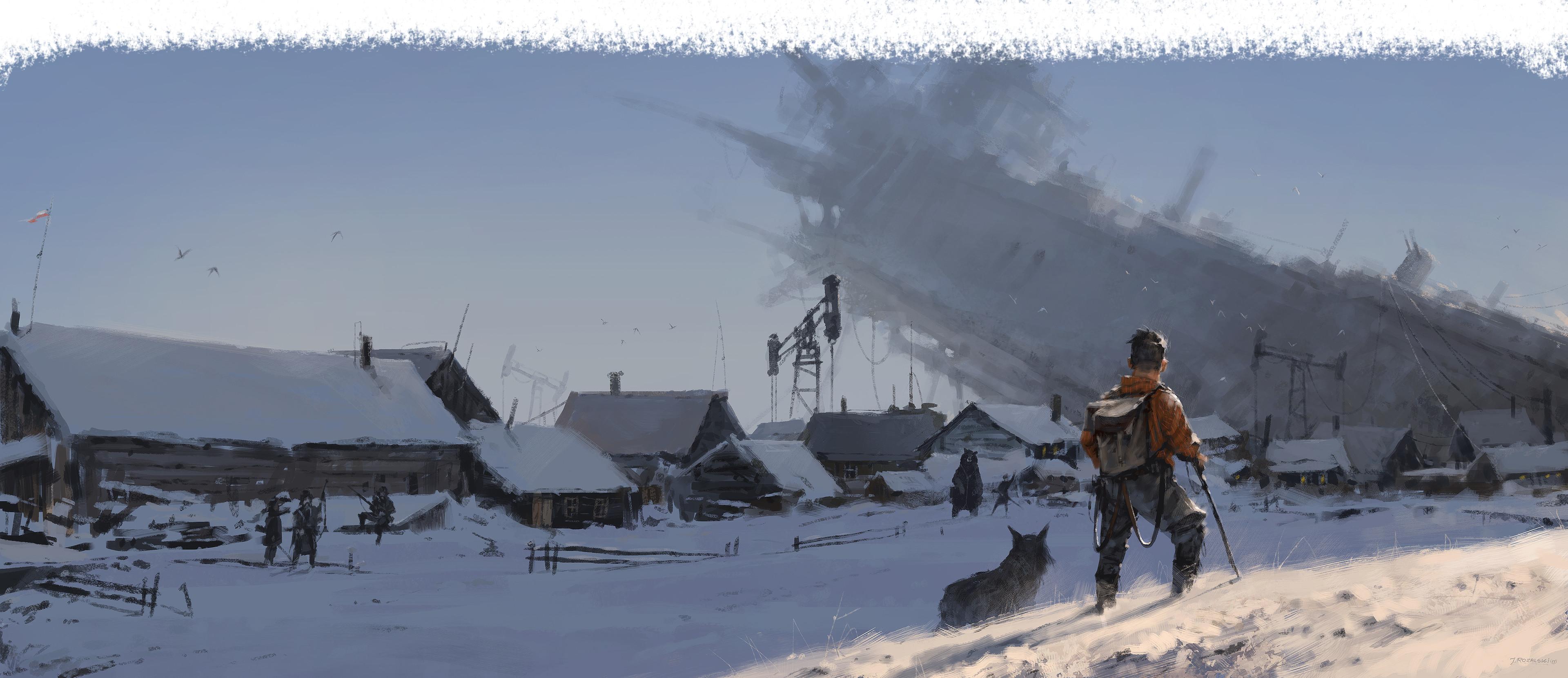
Rations on the Road
While traveling long distances, the party must track their supplies of food, water, and any fuel or feed required for their method of transport. These resources are abstracted as Rations and Fuel.
Rations
A ration consists of enough preserved food and stored water (or water purification equipment) for one average human to sustain themselves for one day of travel. Rations can be purchased in settlements, scavenged on the road or foraged in the wilds.
At the beginning of each day of travel, each member of the party must consume one ration. Any party member that fails to do so automatically suffers one level of exhaustion.
If the party finds themselves on the road with no rations available, they can attempt to forage for food and water for the day. To do so, the party must travel at a slow pace for the day as they spend a large amount of time searching the surroundings. Each member of the party can make a Wisdom (Survival) check at the start of the day, comparing the result to the table below.
Foraging Check
| Climate | DC (1 Ration) | DC (2 Rations) |
|---|---|---|
| Temperate | 15 | 20 |
| Forest | 15 | 20 |
| Lake or River | 12 | 18 |
| Desert | 20 | N/A |
| Frozen | 20 | N/A |
Machines & Fuel
From horse equivalents to the long centipede trawlers used to haul etherstone, many Iadrunians choose machines as their method of transport. However, this choice comes with both advantages and disadvantages.
At the beginning of each day of travel when the party consumes rations, the party must also expend one Etherfuel Canister for each machine they are traveling with. Some machines might require more fuel - this will be noted in the machine's stats if applicable.
Lost or Abandoned Machines
Any machine that cannot be fueled for the day must be abandoned if the party wishes to continue traveling. However, there is the potential to recover the machine at a later time. Each abandoned vehicle creates a Point of Interest on the world map at the point where you left it.
If the party returns to the created point of interest, roll a D100. If the result is equal to or greater than the number of days since the vehicle was abandoned, the vehicle is still present.
Be aware that others may have also found your abandoned machine, and they may not be pleasant individuals. Depending on where you left the machine and for how long, you might find your machine in various states. Perhaps a group of bandits have commandeered the machine or looted it for parts.
In some parts of Iadrune, the elements alone might have done enough damage to disable the machine. It may require repair or even recovery of the missing parts in order to function. The Dungeon Master will determine what event, if any, has occurred.
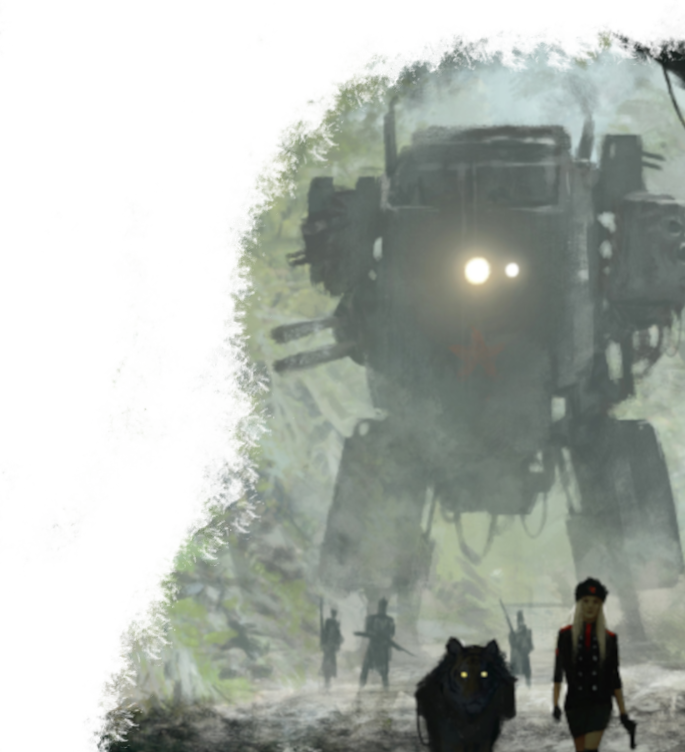
Equipment and Armor
Being a society in the midst of a "Renaissance" era in terms of technology and fashion, additional options for armor and equipment are available.
Powered Armor
Suits of armor powered by Etherfuel, sporting bronze exoskeletons and clockwork machinery to support far more weight than a mortal could by themselves.
Wearing powered armor requires a seperate proficiency from standard armor, divided into four proficiencies: Light Powered Armor, Medium Powered Armor, Heavy Powered Armor, and Exosuits. Some classes gain these proficiencies (and some proficiencies with firearms) in addition to their default options - relevant changes are listed below.
Additional Class Proficiencies
| Class | Firearms | Powered Armors |
|---|---|---|
| Artificer | Simple, Martial Sidearms | Light, Medium |
| Warlord | Simple, Martial | Light, Medium |
| Rogue | Simple, Martial Sidearms, Martial Long Rifles | None |
| Inventor | Simple, Martial Sidearms, Martial Scatterguns | Light, Medium |
Etherfuel and Maintenance
A suit of powered armor requires one Etherfuel Canister to be consumed for every 24 hours of use. For ease of tracking, these units cannot be divided up into partial uses - when you use a canister, the armor can run for the next 24 hours, whether you need it or not.
If the wearer of a set of powered armor is reduced to 0 hit points, the armor is considered broken and will not function until repaired. Repairing powered armor requires proficiency with (and possession of) Tinker's Tools or Smith's Tools. To perform a repair, roll an Intelligence Check with the chosen type of tools and expend 10 GP worth of materials; on a result of 15 or higher, the armor is restored to working condition.
While broken, the suit can still be worn unless it is an exosuit, though it loses the benefit of any properties it may have and is not considered to be powered for any rules purposes. A suit of armor is also considered broken if it is not properly fueled, though it only requires refueling to be restored to working order.
Keep in mind that this repair can be performed by any creature, not just the armor's typical user.
Properties
All powered armor imparts disadvantage on Dexterity (Stealth) checks made by the wearer, as the various whirring motors and heavy footsteps tend to give away their position. Suits of powered armor with the Silent and Stealth properties ignore this effect.
Additionally, while a suit of powered armor can be extremely heavy, each suit is designed to support its own weight when powered. Equipped and powered suits of power armor are counted as weighing only 10 lbs. for the purposes of calculating carry weight and encumbrance.
Most suits of powered armor have additional Properties. The most common of these are:
- Fuel Hungry: This set of armor requires twice as much fuel as normal in order to remain operational.
- Enhanced Strength (X): While this armor is powered, the wearer's Strength score becomes X unless it is already higher.
- Enhanced Speed (X): While this armor is powered, the wearer's walking speed becomes X feet, unless it is already higher.
- Resistance (X): While wearing this armor, the wearer gains resistance to the designated damage type(s).
- Ablative Plating: While wearing this armor, any bludgeoning, piercing, or slashing damage taken by the wearer is reduced by -3.
- Shock Absorbers: While this armor is powered, any bludgeoning damage taken by the wearer from falling is reduced by half.
- Jump Jets: While this armor is powered, the wearer's vertical and long jump distances are tripled, though you can't jump farther than your remaining movement would allow. Using this property produces a loud noise that can be heard from 300ft. away at the user's starting position.
- Mounting Point (X): This set of armor is equipped with the necessary sockets, supports and power sockets to use weapons with the Mounted or Powered properties. A set of powered armor with this property can equip a maximum of X such weapons. (^1)
- Silent: Powered armor with this property ignores the typical disadvantage imparted on Dexterity (Stealth) checks made by the wearer. Additionally, creatures have disadvantage on any Wisdom (Perception) checks made to hear the wearer's movements.
- Stealth: Armor with this property has been modified for use in infiltration. The armor is considered silent, and the bearer can attempt to hide when only lightly obscured.
- Aquatic: Powered armor with this property grants the wearer a swimming speed of 40 ft. Additionally, the internal air supply allows the wearer to breathe underwater for 1 hour. The suit must remain out of the water for 1 hour before the air supply can be used again.
- Insulated: This armor is protected from the extreme heat and cold of Iadrunes outer continents. So long as this armor is powered, the wearer ignores any negative environmental effects due to extreme temperatures.
Rules for Firearms
Overview
Firearms in Iadrune are fairly common, especially on certain parts of the continent. However, while a simple smooth bore musket might be purchased in a decently sized town, more advanced firearms will be more difficult to procure.
Firearms are divided into two categories, each requiring a separate proficiency to use effectively.
Simple Firearms: Basic, black powder weaponry similar to Earth’s. Requires basic training to reload, but most people understand the idea of “point and shoot.” Most are single-shot or cartridge-based, resulting in limited fire rate.
Martial Firearms: More advanced, steampunk-style firearms. Cartridge based, capable of rapid fire or repeat fire. Weapons like gatling guns, repeating rifles and pistols, or weapons with telescopic sights fall into this category.
Common Properties
All firearms have the Loud property unless otherwise stated.
- Loud: An attack with this weapon makes a loud noise that can be heard up to 900ft. away.
- Ammunition (X): Making an attack with this weapon requires the user to expend a piece of X ammunition, typically Powder Charges or Cartridges.
- Misfire (X): If the d20 roll for the weapon is equal to or lower than the misfire value, the attack misses automatically and the weapon jams, requiring an action to un-jam the weapon before it can be used again.
- Rapid Fire (X/Y): When you take the attack action with this weapon, you can replace all attacks that would be made with X number of shots from this weapon. The shots must all be at the same target, or a target within 5ft. of the original target. Some weapons will have a second (Y) value – you can make this number of shots instead, but at disadvantage.
- Loading (X): You can only make X attacks with the weapon on your turn regardless of any abilities granting you additional attacks, and you must spend an action or bonus action reloading the weapon before it can be used again.
- Blast (X ft./DC Y): When attacking with a weapon with this property, you may choose either a creature or location you can see within range as a target. All creatures within X ft. of the target must make a DC Y Dexterity Saving Throw or suffer the weapon's damage, taking no damage on a success.
- Suppression: A creature hit by an attack made with this weapon must succeed on a Wisdom Saving Throw, the DC equal to 10 or half the damage taken, whichever is higher. On failure, the creature immediately drops prone, if able.
- Single Use: A weapon with this property can be used for only one attack, and is then destroyed.
- Powered: A powered weapon must be connected to a power source in order to function. Examples of power sources include powered armor, war machines and certain static emplacements.
- Mounted: This weapon is designed to be mounted on a suit of powered armor with the Mounting Point property, war machines, or some other static mount. A character can only wield it outside of those conditions if they have a strength score of 20 or higher; if they do so, all attacks with the weapon have disadvantage.
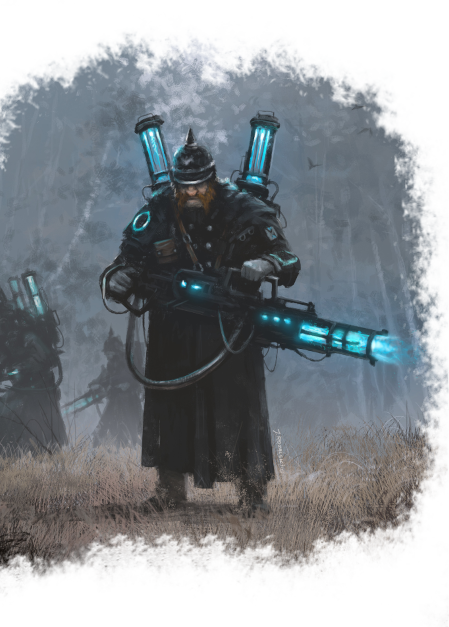
Example Weapons
| Name | Damage | Properties |
|---|---|---|
| Clockwork Bomb | 4d6 Bludgeoning | Ranged (15/30), Blast (5 ft./DC 13), Single Use |
| Mk. II Gatling Gun | 1d6 Piercing | Ranged (40/120), Heavy, Two-Handed, Powered, Rapid Fire (4/6), Suppression |
| Scoped Jezail | 1d12 Piercing | Misfire (2), Loading (1), Heavy, Two-Handed |
Magic
Guns &
Gears
Iadrune and all associated mechanics, maps, and rules have been a labor of love for the last eight months. I'd like to thank everyone that helped me along the way:
Jay, Reese, and Palmer for listening to my hour-long rants about lore when they'd rather be rolling dice;
The members and mods of /r/DnDBehindtheScreen and /r/Unearthed Arcana for providing guidance on formatting, style and balance;
and Rachel, for being the only thing keeping me sane enough to write down these insane ideas.
Art by: Jakub Rozalski
For more information, check out the Iadrune Wiki
